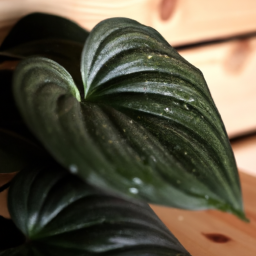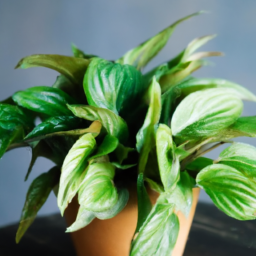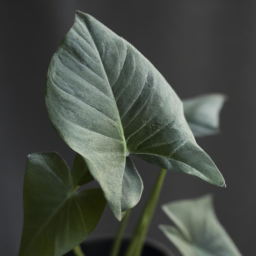
Are you looking to bring some greenery into your home but worried about the lack of natural light? Don’t worry, we have the perfect solution for you – indoor plants low light! Whether you live in a basement apartment or have a room with minimal windows, there are plenty of beautiful plants that thrive in low light conditions. In this blog post, we will explore the world of indoor plants that can survive and even thrive in low light environments, bringing life and beauty to any space, no matter how dimly lit. So, let’s dive in and discover the wonders of indoor plants low light!
Benefits of Indoor Plants in Low Light Conditions
Indoor plants are not only a beautiful addition to any space, but they also offer a range of benefits, even in low light conditions. Whether you have a windowless office or a dimly lit room in your home, there are several indoor plants that can thrive and provide you with a breath of fresh air. In this guide, we will explore the benefits of having indoor plants in low light conditions and provide you with a step-by-step guide on how to choose and care for these plants.
The Benefits of Indoor Plants
Indoor plants have been proven to have numerous positive effects on our physical and mental well-being. Even in low light conditions, they can provide the following benefits:
Improved Air Quality
Indoor plants are natural air purifiers. They absorb carbon dioxide and release oxygen through a process called photosynthesis. Additionally, certain indoor plants have the ability to filter harmful toxins from the air, such as formaldehyde, benzene, and trichloroethylene. In low light conditions, there are specific plants that can still effectively purify the air, such as snake plants, pothos, and peace lilies.
Reduced Stress and Improved Mood
Studies have shown that being around plants can help reduce stress levels and improve mood. The presence of indoor plants in low light conditions can create a calming and soothing environment, making it easier to relax and unwind. The green color of plants is also associated with feelings of tranquility and can help create a sense of well-being.
Increased Productivity and Concentration
Having indoor plants in low light conditions can also enhance productivity and concentration. Research has shown that being in the presence of plants can improve focus and cognitive function. This can be particularly beneficial in office spaces or study areas with limited natural light. Plants such as ZZ plants, Chinese evergreens, and dracaenas are known to thrive in low light conditions and can help create a more productive work or study environment.
Choosing Indoor Plants for Low Light Conditions
When selecting indoor plants for low light conditions, it is important to choose varieties that can thrive in such environments. Here are some popular options:
Snake Plant (Sansevieria)
The snake plant is an excellent choice for low light conditions. It has long, upright leaves that are green with yellow edges, adding a touch of elegance to any space. Snake plants are known for their ability to filter toxins from the air, making them a great choice for improving indoor air quality. They are also low-maintenance and can tolerate neglect, making them perfect for beginners.
Pothos (Epipremnum aureum)
Pothos is another versatile plant that can thrive in low light conditions. It has heart-shaped leaves that come in various shades of green, making it a visually appealing choice. Pothos is known for its ability to purify the air and is particularly effective at removing formaldehyde. It is also a trailing plant, making it a great option for hanging baskets or as a trailing plant on shelves.
Peace Lily (Spathiphyllum)
The peace lily is a popular choice for low light conditions due to its ability to tolerate shade. It has glossy, dark green leaves and produces elegant white flowers. Peace lilies are known for their air-purifying properties and can help remove toxins such as benzene and trichloroethylene from the air. They are also relatively easy to care for and can thrive in low humidity environments.
Caring for Indoor Plants in Low Light Conditions
While indoor plants in low light conditions require less light than those in brighter environments, they still require proper care to thrive. Here are some essential tips:
1. Watering: It is important not to overwater indoor plants in low light conditions, as they may not dry out as quickly. Check the moisture level of the soil regularly and only water when the top inch feels dry. Ensure proper drainage to prevent waterlogging.
2. Avoid Direct Sunlight: While indoor plants still need some light, it is important to avoid placing them in direct sunlight, as this can cause their leaves to burn. Instead, place them in areas with indirect or filtered light.
3. Rotate Plants: Since low light conditions may result in uneven light distribution, it is beneficial to rotate your plants every few weeks to ensure all sides receive adequate light.
4. Dusting: Dust can accumulate on the leaves of indoor plants, blocking sunlight absorption. Regularly wipe the leaves with a damp cloth to remove dust and keep them clean.
5. Fertilization: Indoor plants in low light conditions may have slower growth rates and require less frequent fertilization. Use a balanced, diluted fertilizer once or twice a month during the growing season to provide essential nutrients.
By following these care tips and choosing the right plants, you can enjoy the benefits of indoor plants even in low light conditions. Whether you want to improve air quality, reduce stress, or enhance productivity, there is a wide range of indoor plants that can thrive and bring life to any dimly lit space.

Best Indoor Plants for Low Light Environments
Indoor plants not only add beauty and freshness to our living spaces but also have numerous health benefits. However, not all indoor plants thrive in low light conditions. If you have a room with limited natural light, worry not! There are several indoor plants that can thrive in low light environments. In this article, we will explore some of the best indoor plants that can survive and even thrive in low light conditions.
Snake Plant (Sansevieria Trifasciata)
The Snake Plant, also known as Mother-in-Law’s Tongue, is an excellent choice for low light environments. It is a hardy plant that can tolerate a wide range of light conditions, including low light. The Snake Plant has long, upright leaves that are dark green with light gray-green horizontal stripes. It is not only a visually appealing plant but also has air-purifying properties, making it an ideal choice for indoor spaces.
When it comes to care, the Snake Plant is relatively low-maintenance. It can thrive in both bright, indirect light and low light conditions. However, it is important to avoid overwatering the plant as it prefers slightly dry soil. Watering the Snake Plant once every two to three weeks is usually sufficient, allowing the soil to dry out between waterings.
In terms of propagation, the Snake Plant can be easily propagated by dividing the rhizomes or through leaf cuttings. It is a slow-growing plant, so you won’t have to worry about it outgrowing its space quickly. With its ability to survive in low light conditions and its air-purifying qualities, the Snake Plant is an excellent choice for any indoor space.
ZZ Plant (Zamioculcas Zamiifolia)
The ZZ Plant, also known as Zanzibar Gem, is another fantastic option for low light environments. It is a tropical plant native to Eastern Africa and features glossy, dark green leaves that grow in a graceful, upright manner. The ZZ Plant is not only visually appealing but also very forgiving when it comes to light conditions, making it perfect for spaces with limited natural light.
When caring for a ZZ Plant, it is important to remember that it prefers to be slightly dry rather than overwatered. The plant has rhizomes that store water, allowing it to survive in drought-like conditions. Therefore, it is best to water the ZZ Plant when the top inch of the soil feels dry. Overwatering can lead to root rot, so it’s essential to avoid keeping the plant in standing water.
Propagation of the ZZ Plant can be done through leaf cuttings or by dividing the rhizomes. It is a slow-growing plant, so it won’t require frequent repotting. With its ability to tolerate low light conditions and its striking appearance, the ZZ Plant is a popular choice for indoor gardening enthusiasts.
Cast Iron Plant (Aspidistra Elatior)
The Cast Iron Plant is aptly named for its ability to survive in extremely low light conditions. It is a hardy plant that can tolerate neglect and thrive in spaces where other plants struggle. The Cast Iron Plant has broad, dark green leaves that grow in an upright manner, adding a touch of elegance to any indoor space.
When it comes to caring for a Cast Iron Plant, it is important to remember that it prefers to be slightly dry. Overwatering can lead to root rot, so it’s best to allow the soil to dry out between waterings. The plant can tolerate low humidity levels, making it suitable for spaces with dry air.
Propagation of the Cast Iron Plant can be done through division or by planting rhizomes. It is a slow-growing plant, so it won’t require frequent repotting. With its ability to thrive in low light conditions and its resilience, the Cast Iron Plant is an excellent choice for those looking for an easy-to-care-for indoor plant.
These are just a few examples of indoor plants that can thrive in low light environments. Each plant has its own unique characteristics and care requirements, so it’s essential to research and understand the specific needs of the plants you choose. By selecting the right indoor plants for your low light space, you can create a green oasis that adds beauty and freshness to your home or office.

Tips for Caring for Indoor Plants in Low Light Settings
Understanding Low Light Conditions
Before diving into the tips for caring for indoor plants in low light settings, it is important to understand what low light conditions actually mean. Low light refers to areas in your home or office where natural sunlight is limited, such as rooms with few windows or corners away from direct sunlight.
Plants that thrive in low light conditions have adapted to survive with less sunlight. They typically have larger leaves to capture as much light as possible and can tolerate lower light levels without experiencing any adverse effects.
Now, let’s explore some tips that will help you care for your indoor plants in low light settings.
1. Choose the Right Plants
When it comes to indoor plants that thrive in low light conditions, there are several options to choose from. Some popular choices include:
- Snake Plant (Sansevieria)
- Pothos (Epipremnum aureum)
- ZZ Plant (Zamioculcas zamiifolia)
- Peace Lily (Spathiphyllum)
- Dracaena
These plants have proven to be resilient and can tolerate low light environments. It is important to research the specific care requirements for each plant and ensure they are suitable for your particular space.
2. Placement and Lighting
While low light plants can survive in areas with limited sunlight, it is still crucial to provide them with the best possible lighting conditions within the constraints of your space. Here are some tips:
- Place your plants near windows that receive indirect sunlight, as this will provide them with some natural light.
- Avoid placing plants too close to windows with direct sunlight, as this can lead to leaf burn.
- Consider using artificial lighting, such as fluorescent or LED grow lights, to supplement the natural light in your low light space.
- Rotate your plants every few weeks to ensure all sides receive adequate light exposure.
By paying attention to the placement and lighting of your indoor plants, you can create a more suitable environment for their growth.
3. Watering and Humidity
Proper watering is essential for the health of any plant, and this holds true for indoor plants in low light settings as well. Here are some watering tips:
- Check the moisture level of the soil regularly by inserting your finger about an inch deep. Only water if the soil feels dry to the touch.
- Avoid overwatering, as this can lead to root rot. It is better to underwater than to overwater your plants.
- Consider using a well-draining potting mix to prevent water from sitting in the soil for too long.
In addition to proper watering, maintaining the right humidity levels is also important for indoor plants in low light conditions. Here’s how you can increase humidity:
- Group your plants together to create a microclimate with higher humidity.
- Use a humidifier or place a tray filled with water near your plants to increase moisture in the air.
- Avoid placing your plants near air vents or drafts, as this can cause the humidity levels to drop.
By following these watering and humidity tips, you can ensure that your indoor plants in low light settings receive the moisture they need to thrive.
Conclusion
Caring for indoor plants in low light settings may require some extra attention, but it is definitely achievable. By choosing the right plants, providing suitable lighting, and maintaining proper watering and humidity levels, you can create a conducive environment for your indoor plants to grow and thrive. Remember to always research the specific care requirements of each plant and adjust your care routine accordingly. With a little bit of effort and care, you can enjoy the beauty of indoor plants even in low light conditions.
Crisp Recap
Indoor plants can bring life and beauty to any space, but what if you have a room with low natural light? Don’t worry, there are still plenty of options for you! Many plants thrive in low light conditions, making them perfect for those darker corners or rooms without large windows.
One great option is the snake plant, also known as Sansevieria. This plant is incredibly resilient and can tolerate a wide range of light conditions, including low light. It has striking, upright leaves that add a touch of elegance to any space. Another low light champion is the pothos plant. This vine-like plant is easy to care for and can thrive in almost any lighting situation. Its trailing vines can be displayed in hanging baskets or placed on shelves, adding a touch of greenery to your home. Other great options for low light include the ZZ plant, peace lily, and Chinese evergreen. So, don’t let low light stop you from enjoying the benefits of indoor plants – there are plenty of options to choose from!
Here are this week’s Top Questions and Answers
Q1: What are some indoor plants that thrive in low light conditions?
A1: There are several indoor plants that can thrive in low light conditions. Some popular options include the snake plant, pothos, ZZ plant, peace lily, and cast iron plant. These plants have adapted to survive in environments with limited sunlight and can still grow and thrive indoors.
Q2: How often should I water indoor plants that require low light?
A2: The watering frequency for indoor plants that require low light can vary depending on factors such as the plant species, pot size, and humidity levels. Generally, it’s best to allow the top inch or so of soil to dry out before watering again. Overwatering can lead to root rot, so it’s important to strike a balance and avoid keeping the soil overly moist.
Q3: Can I place low light indoor plants near windows?
A3: While low light indoor plants can tolerate less sunlight than other plants, it’s generally best to keep them away from direct sunlight. Placing them near windows with filtered or indirect light is usually ideal. Direct sunlight can be too intense for these plants, potentially causing leaf burn or damage. It’s important to find the right balance of light for their specific needs.
Q4: How can I improve the lighting conditions for my low light indoor plants?
A4: If you feel that the lighting conditions in your home are insufficient for your low light indoor plants, there are a few things you can do to improve the situation. You can try using artificial grow lights specifically designed for plants, positioning them above or near the plants. Additionally, you can rotate the plants occasionally to ensure all sides receive some light, or consider placing them in a brighter room if available.
Q5: Are there any specific care tips for low light indoor plants?
A5: Yes, there are a few care tips to keep in mind for low light indoor plants. Besides providing adequate watering, it’s important to avoid over-fertilizing these plants as they generally have slower growth rates. Using a well-draining potting mix and ensuring proper drainage in the pots can also help prevent waterlogged soil. Regularly dusting the leaves with a damp cloth can promote better photosynthesis and keep them looking healthy.
Dr. Olivia Green is a botanist with over two decades of experience in indoor plant cultivation. She holds a Ph.D. in Plant Biology and has dedicated her career to researching plant behavior in controlled environments. Dr. Green is passionate about helping plant enthusiasts master the art of indoor gardening through her extensive knowledge and practical insights.


